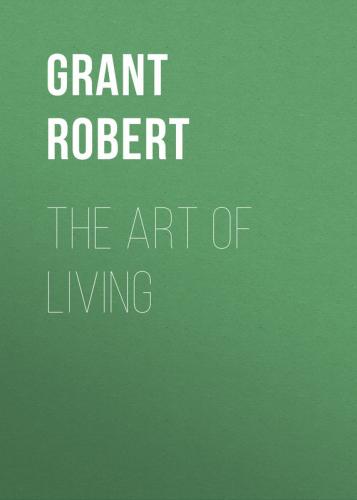To it presently succeeded the æsthetic phase, borrowed from England. Then, instead of selecting everything to match, a young or old couple bought so as just not to match, but to harmonize. All sorts of queer and subtle shades and tints in wall-papers and fabrics appeared, principally dallyings with and improvisings upon green, brown, and yellow; frescos and dados were the rage; and a wave of interest in the scope and mission of eccentric color spread over the land. Valuable as this movement was as an educational factor, there was nothing American in it; or in other words, we were again simply imitative. The very fact, however, that we were ready to imitate, betokened that horse-hair and rep had ceased to satisfy national aspiration, and that we were willing to accept suggestions from without, inasmuch as no native prophet had arisen. But though the impetus came from abroad, the awakening was genuine. Since then the desire to furnish tastefully has been steadily waxing among the more well-to-do portion of the population. As in the case of architecture, the increasing interest has called into existence a professional class, which, though still small and less generally employed than their house-designing brethren, is beginning to play an important part in the education of the public taste in internal house decoration and equipment. The idea that any man or woman may be more fitted than his or her neighbor to choose a carpet or a wall-paper has been grudgingly admitted, and still irritates the average house-owner who is ready to furnish. But the masters, and more conspicuously the mistresses, of the competing superb establishments in our cities, have learned, from the sad experience of some of their predecessors, to swallow their individual trust in their own powers of selection, and to put themselves unreservedly into the clutches of a professional house decorator.
Furnishing a mammoth establishment from top to bottom with somebody else’s money, and plenty of it, must be a delightful occupation. There can be no carking consciousness of price to act as a drag on genius, and it would seem as though the house decorator who was not interfered with under these circumstances had a rare chance to show what is what. When he fails, which is by no means out of the question, he can ordinarily shift the responsibility on to his employer, for an employer can rarely resist the temptation of insisting on some one touch to prove his or her own capacity, and of course it is a simple matter for the man of art to demonstrate that this one touch has spoiled everything. The temptation to try to be as original and captivating in results as possible must be almost irresistible, especially when one’s elbow is constantly jogged by furniture and other dealers, who are only too eager to reproduce a Directory drawing-room or any other old-time splendor. But there is no denying that, whatever his limitations, the house decorator is becoming the best of educators on this side of the water, for though we cannot afford or have too much confidence in our own taste to employ him, our wives watch him like cats and are taking in his ideas through the pores, if not directly.
There are, it is true, almost as many diverse styles of internal ornamentation as of external architecture in our modern residences, for everyone who has, or thinks he has, an aptitude for furnishing is trying his professional or ’prentice hand, sometimes with startling results; yet the diversities seem less significant than in the case of external architecture, or perhaps it may be said that the sum total of effect is much nearer to finality or perfection. If as a nation we are deriving the inspiration for the furniture and upholsteries of our drawing-rooms and libraries from the best French and Dutch models of a century or more ago, we certainly can boast that the comfortable features which distinguish our apartments from their prototypes are a native growth. If as a people we cannot yet point to great original artistic triumphs, may we not claim the spacious and dignified contemporary refrigerator, the convenient laundry, the frequently occurring and palatial bath-room, the health-conducing ventilator-pipe and sanitary fixtures, and the various electrical and other pipes, tubes, and appliances which have become a part of every well-ordered house, as a national cult? To be genuinely comfortable in every-day life seems to have become the aim all the world over of the individual seeking to live wisely, and the rest of the world is in our debt for the many valuable mechanical aids to comfort in the home which have been invented on this side of the water.
Конец ознакомительного фрагмента.
Текст предоставлен ООО «ЛитРес».
Прочитайте эту книгу целиком, купив полную легальную версию на ЛитРес.
Безопасно оплатить книгу можно банковской картой Visa, MasterCard, Maestro, со счета мобильного телефона, с платежного терминала, в салоне МТС или Связной, через PayPal, WebMoney, Яндекс.Деньги, QIWI Кошелек, бонусными картами или другим удобным Вам способом.
